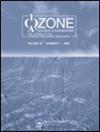Aflatoxin M1 degradation using high voltage atmospheric cold plasma (HVACP) technology
IF 1.4
4区 环境科学与生态学
Q3 ENGINEERING, ENVIRONMENTAL
引用次数: 0
Abstract
ABSTRACT Aflatoxins are one of the highly toxic secondary metabolites with high decomposition temperatures, ranging from 237 °C to 306 °C. Therefore, non-thermal treatments are preferred to ensure safe food while preserving food quality. High voltage atmospheric cold plasma (HVACP) is a novel non-thermal technology with the potential to reduce contaminants (e.g. mycotoxins) owing to reactive species such as ozone. Therefore, the aim of this study was to investigate the efficacy of HVACP to degrade Aflatoxin M1 (AFM1) in pure water. A dielectric barrier discharge HVACP was performed at 90 kV using modified air (MA65: 65% O2, 30% CO2, 5% N2) fill gas for 1, 3, and 5 min in a direct and indirect mode with no post-treatment or 4.0 h post-storage at room temperature. The chemical properties of water were evaluated. Ozone concentration in both gas and liquid phases was also measured. A 77% reduction of AFM1 was observed after 1 min of direct treatment with no post-treatment storage. The nitrate and peroxide contents after 1 min of direct treatment were 4.50 ± 0.70 and 9.5 ± 0.70 mg/L, respectively. Longer treatment time and direct mode of exposure resulted in a higher ozone concentration in either the gas or liquid phase. These results demonstrate the potential of HVACP as a non-thermal treatment for reducing AFM1 concentration. HVACP was capable of significantly degrading AFM1 using a very short treatment time and 4.0-h post-treatment storage.高压常压冷等离子体技术降解黄曲霉毒素M1
黄曲霉毒素是一种具有高分解温度的高毒性次生代谢物,分解温度在237 ~ 306℃之间。因此,为了在保证食品安全的同时保持食品质量,首选非热处理。高压大气冷等离子体(HVACP)是一种新型的非热技术,具有减少臭氧等活性物质引起的污染物(如真菌毒素)的潜力。因此,本研究的目的是研究HVACP对纯水中黄曲霉毒素M1 (AFM1)的降解效果。介质阻挡放电HVACP在90 kV下使用改性空气(MA65: 65% O2, 30% CO2, 5% N2)填充气体,在直接和间接模式下进行1,3,5 min,不进行后处理或在室温下储存4.0 h。对水的化学性质进行了评价。测定了气相和液相中的臭氧浓度。直接治疗1分钟后,AFM1减少77%,没有后处理储存。直接处理1 min后,硝酸盐和过氧化氢含量分别为4.50±0.70和9.5±0.70 mg/L。较长的处理时间和直接暴露方式导致气相或液相臭氧浓度较高。这些结果证明了HVACP作为一种非热处理方法降低AFM1浓度的潜力。HVACP能够在很短的处理时间和处理后4.0 h的储存时间内显著降解AFM1。
本文章由计算机程序翻译,如有差异,请以英文原文为准。
求助全文
约1分钟内获得全文
求助全文
来源期刊

Ozone: Science & Engineering
环境科学-工程:环境
CiteScore
5.90
自引率
11.10%
发文量
40
审稿时长
2 months
期刊介绍:
The only journal in the world that focuses on the technologies of ozone and related oxidation technologies, Ozone: Science and Engineering brings you quality original research, review papers, research notes, and case histories in each issue. Get the most up-to date results of basic, applied, and engineered research including:
-Ozone generation and contacting-
Treatment of drinking water-
Analysis of ozone in gases and liquids-
Treatment of wastewater and hazardous waste-
Advanced oxidation processes-
Treatment of emerging contaminants-
Agri-Food applications-
Process control of ozone systems-
New applications for ozone (e.g. laundry applications, semiconductor applications)-
Chemical synthesis.
All submitted manuscripts are subject to initial appraisal by the Editor, and, if found suitable for further consideration, to peer review by independent, anonymous expert referees.
 求助内容:
求助内容: 应助结果提醒方式:
应助结果提醒方式:


